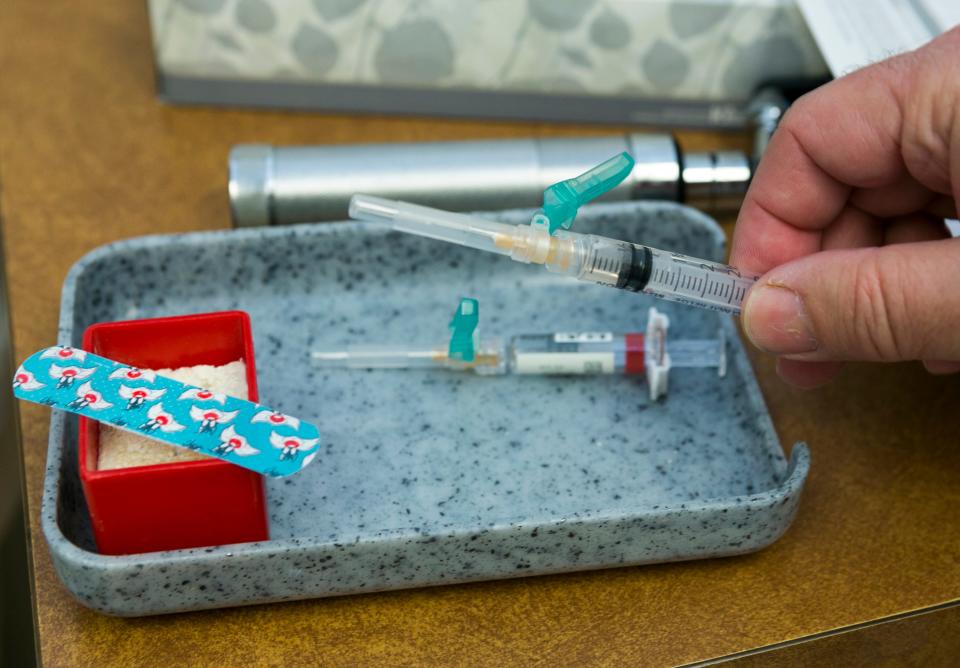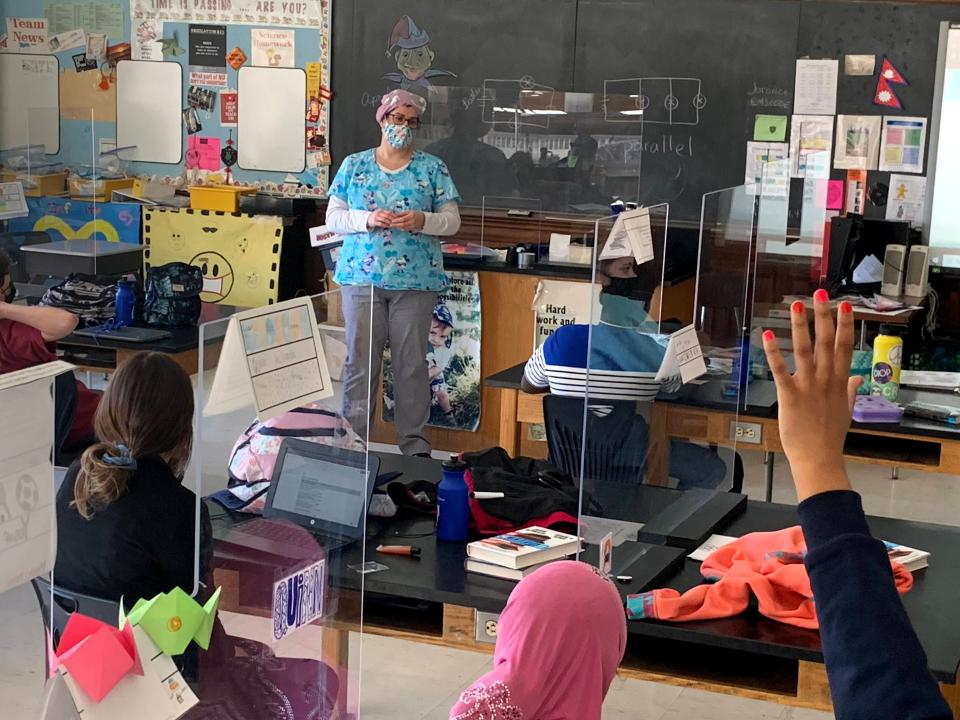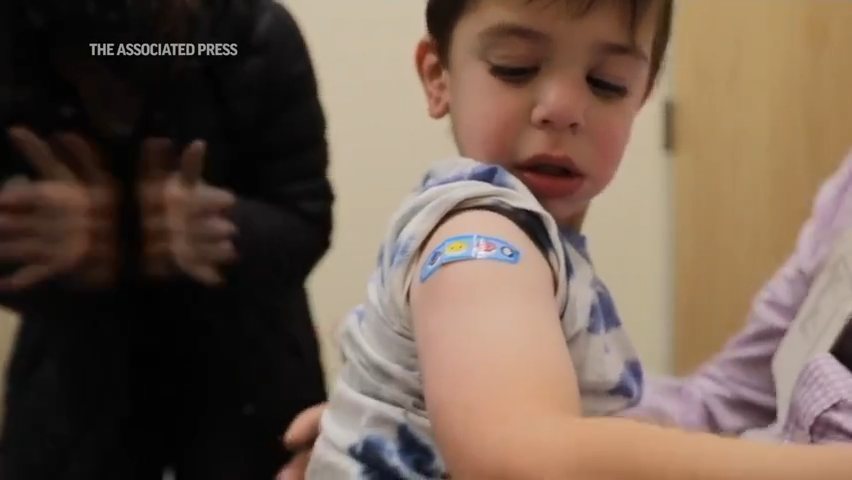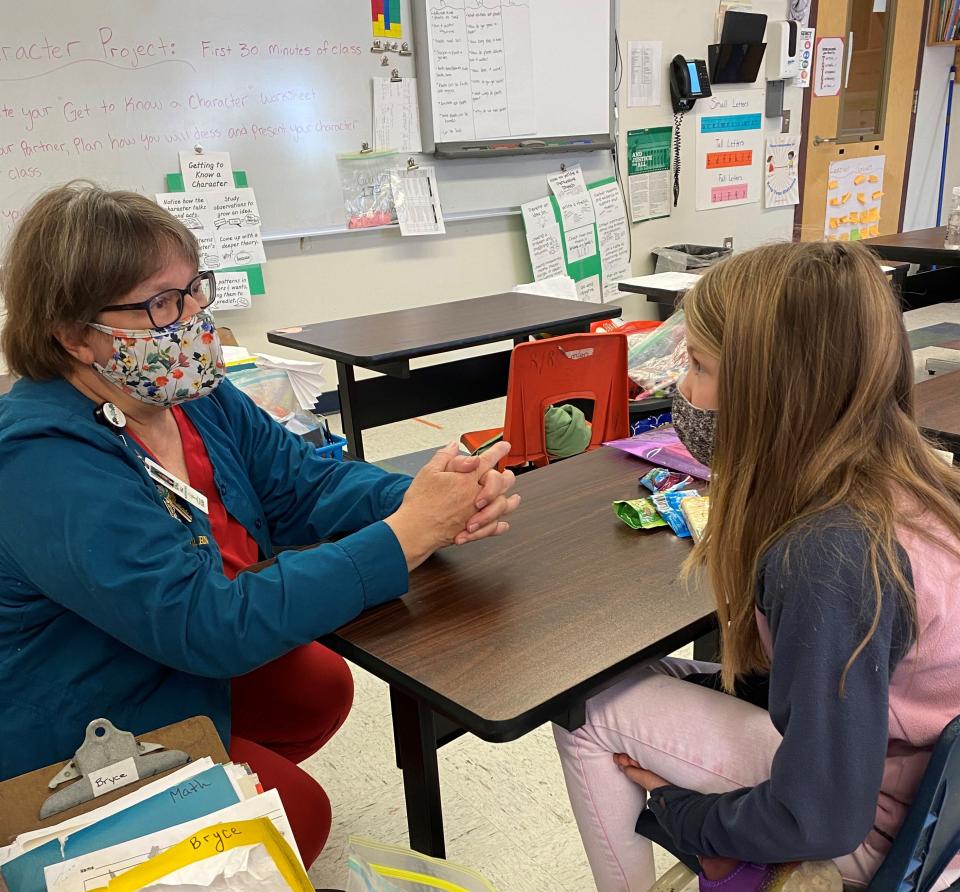Are Vermont students getting their childhood vaccines? The 5 schools with the lowest rates
Step into any classroom during winter, and the sounds of sniffling noses prevails. School communities are a place where infection can quickly sweep through the population. Unlike the common cold, COVID-19 recently illuminated the risk students have of coming down with a serious disease.
For this reason, Vermont requires students in public and independent schools to be vaccinated against certain preventable diseases. However, exemptions, given for medical or religious reasons, can cause a school community to not reach coverage levels that provide "herd immunity" for the vulnerable or unvaccinated.
How protected are Vermont students? The Vermont Department of Health released vaccine data for K-12 schools in a new dashboard that shows rates for the past six school years.

The data show most schools in the state have reached more than 90% immunization rates. However, there are some that are well below that could create a climate for an outbreak if a disease like measles, for instance, was introduced.
What immunizations are required for Vermont students?
Vermont students require five doses of DTaP to protect against diphtheria, tetanus and pertussis; four doses of the polio vaccine; two doses of MMR for measles, mumps and rubella; three doses of hepatitis B vaccine; and two doses of varicella to protect against chickenpox unless the child has documentation they have contracted chickenpox.
Seventh-grade students need an additional DTaP dose and students living on campus in a boarding school-type environment also require one to two doses of meningococcal (MenACWY) vaccine depending upon their age.
How do the vaccine exemptions work in Vermont schools
Parents can, however, obtain an exemption for their child to attend school without receiving one or more vaccinations for medical or religious reasons. In 2015, Vermont removed philosophical exemptions as an accepted reason for not being vaccinated.
In the case of a medical exemption, a child may be allergic to an ingredient in the vaccine, for instance. Both types of exemption require the parent to fill out a form, and religious exemptions require a new form every year. The parent must also sign a document that explains the risks of not being vaccinated and that their child may be excluded from school if an outbreak occurs.
A student may be provisionally admitted to school, however, if they have a plan for completing their vaccination schedule within six months.
What about COVID-19 vaccinations?
COVID vaccination was tracked by Vermont schools when vaccinations were first offered for the disease, while the state of emergency persisted and until much of the population was covered. Shortly thereafter, parents were asked to fill out a COVID vaccine attestation for their children but that practice has since dropped.

The challenge with COVID and the flu, as well, is both vaccines require seasonal doses and subsequent boosters. Because of this, they are more difficult to monitor or enforce. Seasonal vaccinations aren't required in order to attend school, and, therefore, are not tracked on the health department's vaccine dashboard.
What level of vaccine coverage protects a school from the risk of an outbreak?
The health department would like to see every student up to date on recommended vaccines, excluding those who have a medical reason not to (about 0.2% of the population), according to Patsy Kelso, the state's epidemiologist for infectious disease.
Immunizations prevent an illness from being caught or spread and also keep students in school, she said. Kelso gave the example of a child exposed to pertussis − whooping cough − who is not vaccinated against it: that child may be excluded from school for up to 21 days or at minimum five days if being treated with antibiotics.
"Of the diseases that can be prevented with routine childhood vaccines, measles is the most infectious," Kelso said. "It spreads very effectively with even short periods of limited contact, such as sitting in the same room." She said at least 95% of students need to be vaccinated against measles to prevent an outbreak.
When is 'herd immunity' achieved
Herd immunity is achieved when a high number of people in a community are vaccinated and it makes person-to-person spread unlikely. Laura Ann Nicolai, who is the deputy state epidemiologist and senior infectious disease manager, said achieving herd immunity in schools protects some of the most vulnerable.
"This is important because a very small percentage of children cannot be vaccinated due to specific underlying medical conditions (such as severe immunosuppression or anaphylactic allergies)," she wrote in an email. "When these individuals are surrounded by a well-vaccinated community, they receive the benefits of community immunity."
Nicolai said there are still risks even with high vaccine rates. "Even when overall vaccine coverage is high, herd immunity is threatened when pockets of individuals who are not immunized interact with one another."

Here are herd immunity percentages for different preventable diseases, according to the health department:
Measles – 95%
Mumps – 75% to 86%
Rubella – 83% to 94%
Diphtheria – 75% to 80%
Pertussis – 90% to 94%
Varicella – 86% to 91%
Polio – 80% to 86%
Even though mumps and rubella have lower herd immunity threshold percentages than measles, the MMR vaccine covers all three and requires higher vaccine rates to protect against measles. In the case of diphtheria, pertussis, and tetanus a childhood vaccination doesn't provide lifelong protection so adults need boosters.
Tetanus doesn't require herd immunity as it doesn't spread from person to person.
How many Vermont students are vaccinated
For the 2022/2023 school year, 94% were fully vaccinated among the 81,910 students in Vermont public and independent K-12 schools. There was a 5% difference when comparing public and independent schools, at 95% and 90% respectively. There are around 9,000 independent school students in Vermont.
These fully immunized rates track students who have all of their required vaccines and doses.
If a student missed just one vaccine or one dose, they would not have been counted as fully immunized but are still counted for the individual vaccines they received. For this reason, many of the vaccine percentages are higher than the fully immunized percentages. For varicella, polio, MMR, Hep B and the DTap vaccine, about 97% of public students were vaccinated for each, while independent rates were around 93% for each.
Who is getting vaccinated: Are COVID vaccine concerns impacting flu-shot rates? Here's what the data says.
Exemptions given during the same year were 3% of the population for religious reasons and 0.2% for medical reasons, while 3% of students received provisional admittance.
Comparing rates for the past six school years, public school vaccination rates got a 1% increase in 2019-2020, then returned to 95%. Independent schools have ranged from 89% to 91% in that time period, receiving a 1% increase in 2019-2020 and again in 2020-2021 before settling in at 90% for the past two school years.

What about the vaccination rates at the Chittenden County schools
Chittenden County schools as a whole received "greater than 95%" coverage both for fully immunized and individual vaccine rates in 2022-2023. The greater than 95% rate seemed to be the highest the dashboard would indicate for rates by county.
For individual schools, the highest percentage indicated on the dashboard was "greater than 90%." A school must have at least 50 students to appear on the dashboard. Residential schools − ones that offer a boarding option − also require meningococcal vaccination, but those percentages were only provided in the dashboard if that school had more than 50 students living on campus.
Among the Chittenden County public and private schools in 2022-2023, four had fully immunized rates that were less than 90%. They were Lake Champlain Waldorf School in Shelburne at 73%, Integrated Arts Academy in Burlington at 85%, The Schoolhouse in South Burlington at 87%, and Winooski Middle School at 89%.
Vermont independent schools with the lowest vaccination rates
These independent schools had the five lowest percentages for "fully immunized" in the 2022-2023 school year. However, specific vaccine rates achieved herd immunity levels in some instances for all but the two lowest schools.
Orchard Valley Waldorf School in East Montpelier − 38%
Grace Christian School in Bennington − 56%
Rutland Area Christian School − 67%
Mount Mansfield Winter Academy in Stowe − 68%
Red Cedar School in Bristol − 71%
Vermont public schools with the lowest vaccination rates
Here are the five public schools in Vermont with the lowest fully immunized rates, however, all reached herd immunity levels for at least a couple of the individual diseases.
Woodbury Elementary − 78%
Marlboro Elementary − 81%
Mt. Holly School − 83%
Hazen Union High School − 83%
Lowell Graded School − 83%
The three schools with 83% were evaluated for their individual vaccine rates as well to determine placement on this list. Mt. Holly students were 83% covered for each vaccine, Hazen Union ranged from 83% to 85% and Lowell ranged from 83% to 88%.
In all, 47 Vermont schools had fully immunized rates below 90% among the 322 with at least 50 students. An additional 88 schools did not have individual information due to their small size but factored into the statewide results.
If you would like to see vaccination rates in your school, you can find the dashboard at https://www.healthvermont.gov/stats/surveillance-reporting-topic/vaccination-coverage.
Contact reporter April Barton at abarton@freepressmedia.com or 802-660-1854. Follow her on Twitter @aprildbarton.
This article originally appeared on Burlington Free Press: Vermont childhood vaccination rates: Look at Chittenden County schools

